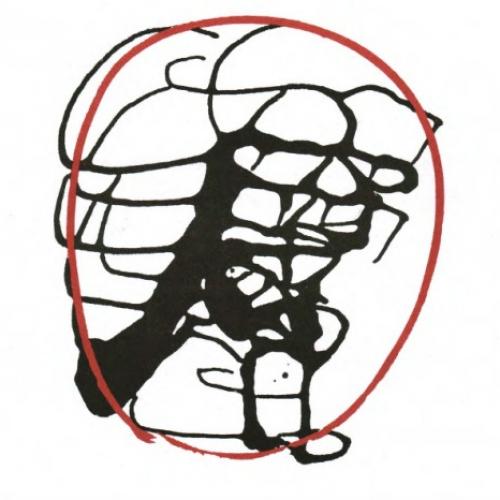Copy Link
Add to Bookmark
Report
NL-KR Digest Volume 09 No. 18

NL-KR Digest (Fri Apr 17 12:25:04 1992) Volume 9 No. 18
Today's Topics:
News: Institute of Russian language
CFP: SimTec `92 - International Simulation Technology Conference
Talk: BBN Seminar: Eric Brill (past)
Talk: BBN Seminar: Professor Vandamme (past)
Submissions: nl-kr@cs.rpi.edu
Requests, policy: nl-kr-request@cs.rpi.edu
Back issues are available from host archive.cssage.rpi.edu [128.113.53.18] in
the files nl-kr/Vxx/Nyy (ie nl-kr/V01/N01 for V1#1), mail requests will
not be promptly satisfied. If you can't reach `cs.rpi.edu' you may want
to use `turing.cs.rpi.edu' instead.
BITNET subscribers: we now have a LISTSERVer for nl-kr.
You may send submissions to NL-KR@RPIECS
and any listserv-style administrative requests to LISTSERV@RPIECS.
-----------------------------------------------------------------
To: nl-kr@cs.rpi.edu
Newsgroups: comp.ai.nlang-know-rep
From: val@qwerty.msk.su (Vorobjov Andry L.)
Subject: First news from Institute of Russian language
Reply-To: val@qwerty.msk.su
Organization: Small Venture QWERTY
Date: Tue, 7 Apr 92 16:51:50 -0500
It's well known that the Ozjegov dictionary of
Russian laguage (in a one volume), is a focus of language
surroundings and language personality. This dictionary has
23 editions for the last 25 years (total ammount around 4,5 million-copies.
The editor in chef of the dictionary (since the death of S.I.
Ozjegov 1964) is N.Shvedova - membre-correspondent of RAS,
the author of the Grammar of Russian (published in 1952, 1970 and 1980)
state-prize and Pushkin-prize laureate, a well-known linguist.
N.Shvedova has exircised a great ammount of work, the result of
that was the 9-th edition. A certain ammendemants introduced
in 13th-16th and 19th editions. In 1989 a 21-th edition was
published with many ammendements in all aspects of the dictionary.
The theasaurees has been enreached, many new lexical changes for
the last decades has been reflected. The development of the
linguistic and science has found its reflection in the elaboration
of this dictionary. Data-base "SLOVO" is found on the material
of 21 editon by the reseachers from the grammar and
lexicology-departemant in the Institute of Russian language by
the scientists headed by N.J. Shvedova. The authors of this
data-base are doctor of philology Popov V.N. and Safonova J.A.,
members of Shvedova's team, which deals with the eleboration
of new systematic dictionary of Russian.
The database represents well structured and convenient for a
user an array of words-meaning (total volume 300 000 words).
There is segment keeping of free formating as well as the entries
with fixed structure.
Structuring and qauntity of fields can be determined by the
linguistic meaning's structure itself and gives an opportunity on
this database:
- drawing up new dictionaries by the user itself;
- automatic shaping of the text's arrays for editoring,
making up camera-ready copy;
- making up semantic oriented systems of editoring;
- eleborating of training's programs;
Database's fields are represented by the standard (more than
100) and complete (near 20) components. General fields are
represented by their entry's variants.
Database is primarly arranged on the principle of parts of
speech (inside according ABC). The gives an opportunity to embody
all the array in structured groups inside every part of speech.
This emboding of database is exhaustive and
non-contradictive the very nature of russian grammar.
The theoratical principles of database are eleborated and
published by the reseachers from the Institute of Russian
language.
The database is oriented on a standard dictionary (choosen
by the clients). It can be loaded by the existing dictionary's
array (GAD, SAD, UD, DO) as well as by Dall dictionary, a new
systematic semantic dictionary of russian, aimed at computer
representation.
Work in a full swing is going on in the Institute on
representation of russian-englishe dictionary, based on a new
semantic dictionary of russian. Every meaning in russian would
have its equivalent in English. There is an opportunity of making
up English-Russian dictionary on the same principle. In this way
the new glossary would be 3-4 times larger than the existing
English-Russian dictionary's glossary.
Users of database can be:
- scientific centres, slavistic centres.
- universaties;
- libraries.
This database is a selfsufficient one as a subject for a
linguistic reseach. The database promotes
1) to conduct reseaching work (to create (to invent) an
universal matrix of an editorial);
2) to organise a reseach-work of editorial-structure
aspekts, interaction of its different zones possibilities
to display and compress the editorial-zones and proper
linguistic zones of an editorial.
This database can be applied in poligraphy thanks
to the existing and organised semantic fields:
1) with a help of aspects, of those semantic fields
the user can organise text with differnt types,
2) to collect new dictionaries of synonyms,
antonyms, different types of semantic dictionaries,
bilingual dictionaries,
3) to correct quickly and edit big massifs of
editonials and make necessary corrections.
III. The database can be
a usefull reference surrounding
applied in tutorial aspects it promotes
1) creating tutorial games for training special skills,
2) pupil can be trained on computer,
3) creating progressive games, puzzles, charades,
and develop logic thinking habits.
Database-composition
The database inself is presented by four massifs-blocs
compounded in a parts-speech-division.
-verb-block,
-substantive-block,
-adjective-block,
-tout-block (pronouns, adverbs, firt part of compound
words, auxiliaries).
The database has got semantic fields (consists of
4 symbols in Cyrillic alphabet divided from the
content with a vertical line |).
Those fields are classified with a principe "one field
isn't able to have got only one baby". In other words
one semantic field can not be affached only one
content (filling). This principle is economic enough,
and delivers from redundancy (surplus) and premotes
to make a proper research work. The fields om its
contents strongly corresped to the definite
zones of editorials.
For more information, contact val@qwerty.msk.su
Post adress: Russia Moskow 105047 box 185
E-Mail : val@qwerty.msk.su
With best regards Andrey L Vorobjev.
------------------------------
To: nl-kr@cs.rpi.edu
Date: Wed, 15 Apr 92 09:25:38 CDT
From: mccoy@gothamcity.jsc.nasa.gov (Daniel Jack McCoy)
Subject: CFP: SimTec `92 - International Simulation Technology Conference
[ This is really fringe for this Digest, but I know there are some
people who do simulation here... -CW ]
CALL FOR PAPERS
1992 International Simulation Technology Conference
November 4-6, 1992
South Shore Harbour / Johnson Space Center
Clear Lake, Texas (near Houston and Galveston)
Aerospace, Life & Physical Sciences, Intelligent Systems
Advances in Computing and Simulation Technology
* Space Avionics / Display and Control Systems
- Rita Schindeler, Lockheed Engineering and Sciences (713) 333-7091
* Real-Time Simulation and Engineering Simulators
- Pat Brown, The MITRE Corporation (713) 333-0926
* Man-in-the-Loop Flight Simulation
- Richard Cox, General Dynamics (817) 777-3744
* Satellite Simulators
- Juan Miro, European Space Agency (+49) 6151 902717
* Automatic Control Systems
- C. F. Chen, Boston University (617) 353-2567
* Biomedical Modeling & Simulation
- John Clark, Rice University (713) 527-8108 x3597
* Geophysical Modeling & Simulation
- David Norton, Houston Area Research Center (713) 363-7944
* High Energy Physics / SSC Modeling & Simulation
- David Adams, Rice University (713) 285-5316
* Advances in Simulation Technology
- Mary Lou Padgett, Aubum University (205) 821-2472
* Computer Vision/Coupled Oscillation
- Steve Anderson, KAFB (505) 256-7799
* Electronic/VSLI
* High Performance Computing / Computers
- Mohammad Obaidat, University of Missouri (816) 235-1276
* Mathematical Modeling
- Richard Greechie, Louisiana Tech University (318) 257-2538
* Automation & Robotics
- Ian Walker, Rice University (713) 527-8101 x2359
* Intelligent Computer Environments
- Michele Izygon, NASA JSC (713) 483-8110
* Expert Systems
- David Hamilton, IBM Corporation (713) 282-8357
* Neural Networks and Fuzzy Logic
- Robert Shelton, NASA JSC (713) 483-5901
* Intelligent Computer Aided Training (ICAT)
- Bowen Loftin, University of Houston & NASA JSC (713) 483-8070
* Virtual Reality
- Lui Wang, NASA JSC (713) 483-8074
* Signal Processing and Analysis/Pattern Recognition
- Michael Hinman, Rome Labs (315) 330-3175
* Sensor Fusion
- Robert Pap, Accurate Automation (615) 622-4642
* Manufacturing Simulation
* Neural Networks: NETS Users Group Meeting
- Robert Shelton, NASA JSC (713) 483-5901
BEST SIMTEC `92 PAPER AWARDS
Selected papers will be considered for publication in the SCS monthly
journal SIMULATION, or the Transactions of the society for Computer
Simulation. Paper contest categories are: Academic, Industrial and
Government.
IMPORTANT DATES
Full papers (5 copies), will be reviewed and are due by May 15, 1992.
One page abstracts for poster papers, oral-presentations-only and
other sessions, tutorials, discussions and working group proposals are
due by June 15, 1992. Include a cover letter stating the name,
address, phone, fax, and e-mail address of each author. Authors will
be notified by July 1, 1992. Proceedings are available at the
conference. Therefore, final full-length, camera-ready papers
(approximately 6 printable pages) are due by August 1, 1992.
GENERAL CHAIR - Tony Sava - IBM Corporation
ASSOCIATE GENERAL CHAIR - Roberta Kirkham - Lockheed Engineering and Sciences
Company
NASA REPRESENTATIVE - Robert Savely - NASA Johnson Space Center
LOCAL ARRANGEMENTS CHAIR(and Associate Technical Editor) - Akur Hajare - The
MITRE Corporation
EXHIBITS CHAIR - Wade Webster, MC A22 - Lockheed Engineering and Sciences
Company
EUROPEAN SPACE AGENCY REPRESENTATIVE - Juan Miro - ESA
PROGRAM CHAIR: Troy Henson, IBM Corporation (713) 282-7476
Submit papers, abstracts or proposals to:
TECHNICAL EDITOR & SCS REPRESENTATIVE
Mary Lou Padgett, Auburn University
1165 Owens Road
Auburn, Alabama 36830
Phone: (205) 821-2472 or 3488 FAX: (619) 277-3930
E-mail: mpadgett@eng.auburn.edu
Sponsored by: The Society for Computer Simulation, P.O. Box 17900, San Diego,
California 92177; Phone: (619) 277-3888; FAX: (619) 277-3930. Co-
sponsored by NASA/JSC. In Cooperation with SPIE.
------------------------------
To: nl-kr@cs.rpi.edu
Date: Mon, 13 Apr 92 10:05:33 -0400
Subject: BBN Seminar: Eric Brill (past)
From: Sean Boisen <sboisen@BBN.COM>
Reply-To: sboisen@BBN.COM
BBN Science Development Program
AI Seminar Series Lecture
A DISTRIBUTIONAL ANALYSIS APPROACH TO LANGUAGE ACQUISITION
ERIC BRILL
DEPARTMENT OF COMPUTER AND INFORMATION SCIENCE
UNIVERSITY OF PENNSYLVANIA
BBN 4th floor large conference room (6/471)
10 Moulton St, Cambridge MA, 02138
Friday, April 17th, 1992, 2:00 PM
The distributional hypothesis holds that lexical features and
syntactic phenomena manifest themselves in a way that can be observed
in surface-apparent distributional behavior. It is unknown to what
extent this hypothesis is valid. Clearly there are cases where this
hypothesis fails to hold; many such cases have been documented by
Chomsky and others. The uncovering of subtle facts about language
which appear to be far from surface apparent has served as a strong
motivation for assuming that language is innate, since a
distributional approach to learning these phenomena would seem doomed
to failure. However, the distinction between what can be learned
distributionally and what cannot is not well demarcated.
There are two primary reasons for investigating the question
of what linguistic phenomena can be learned by observing
distributional behavior over a sufficiently large sample corpus of a
language. The first reason is the desire providing a system with
lexical and syntactic information is extremely time-consuming. To do
so in a robust manner is difficult, if not impossible. It might be
that systems that are able to learn language are the only hope for
providing robust natural language processing.
The second reason for investigating the distributional
hypothesis is to gain insight into the problem of child language
acquisition. By providing computational models for learning facets of
language distributionally, we provide evidence that it is at least
possible that children are employing distributional analysis in these
cases, thereby somewhat obviating the need to assume that these facets
are innate.
In my talk I will describe distributional learning procedures
that can discover lexical features and phrase structure. The
procedures learn through a distributional analysis of unparsed text.
Lexical features are learned using the assumption that features
license the distribution of words: words with similar distributional
behavior share the same features. Phrase structure is learned using
the assumption that if a single lexical item can be substituted for a
pair of words in most environments, then that pair of words probably
constitutes a phrase. In both cases, distributional behavior is
observed over a very simple and very local set of environments. It is
my hope that this talk will show that distributional analysis is a
more powerful learning tool than was previously believed.
------------------------------
To: nl-kr@cs.rpi.edu
Date: Tue, 14 Apr 92 13:38:54 EDT
From: Helene George <hgeorge@BBN.COM>
Subject: BBN Seminar: Professor Vandamme (past)
BBN STC Science Development Program
AI Seminar Series Lecture
An Overview of BIKIT
Professor Vandamme
BBN ST, 4th floor large conference room
10 Moulton St, Cambridge MA
Thursday, April 16, 1992, ll:00 am
Abstract:
The Babbage Institute for Knowledge and Information Technology, BIKIT,
which is associated with the State University of Ghent in Belgium,
groups a number of companies and university labs.
Besides fundamental research in the filed of knowledge technology,
concrete short term projects are carried out (only for members!) in
the domain of Expert Systems, Artificial Intelligence and their
integration in information technology.
Bikit members come from industry, banking, software houses etc.
BIKIT was set up in 1985 to meet an urgent need for transfer and
development of know-how in the area of knowledge based systems and
artificial intelligence and their links to information technology.
BIKIT generates high quality research resulting from the intensive
collaboration of important laboratories of the State University of
Ghent, as well as national and international industries and services.
Its main research topics are:
- knowledge based interpretation - expert systems
- knowledge assisted knowledge engineering - knowledge-driven process control
- automatic knowledge acquisition - expert database systems
- knowledge extraction - KT-audit
- speech recognition and synthesis - parallel computing
- dialogue interface and natural language - robotics
- AI language Prolog - specific communication problems
- neural networks - collaborative systems
- knowledge based planning and scheduling - training of trainers
- image processing - technology transfer
------------------------------
End of NL-KR Digest
*******************























